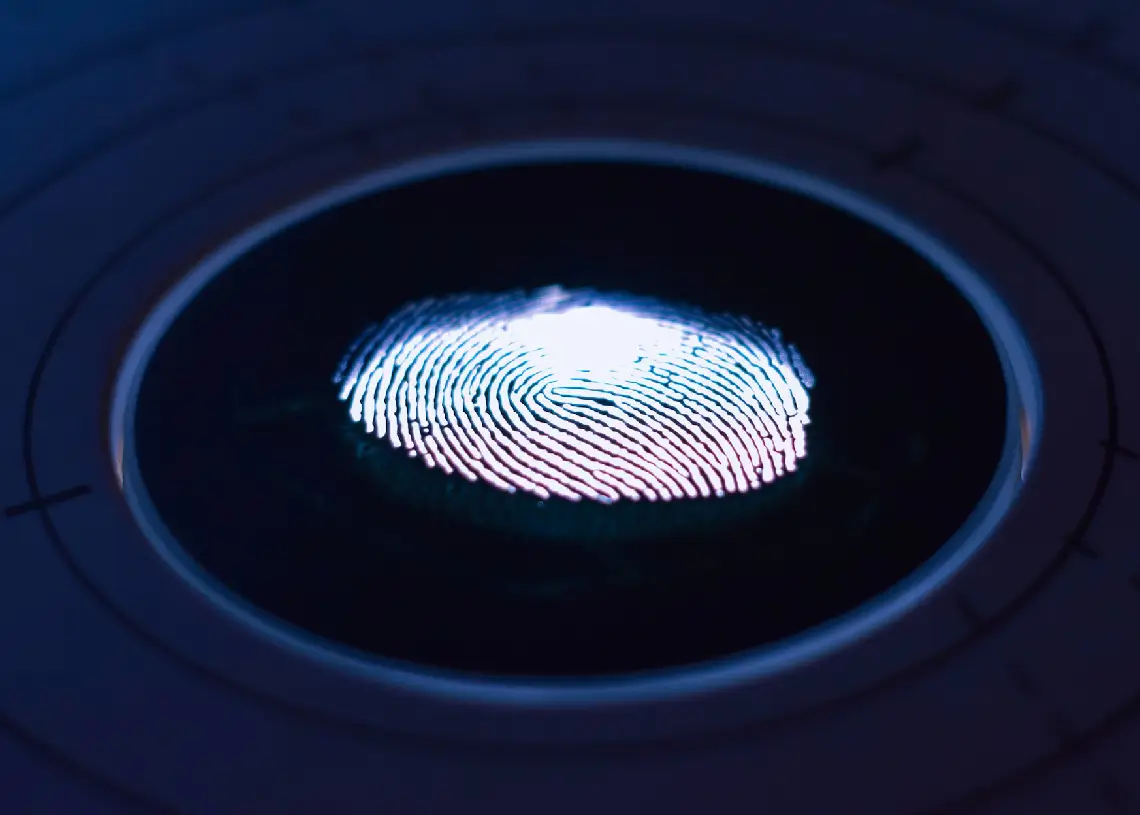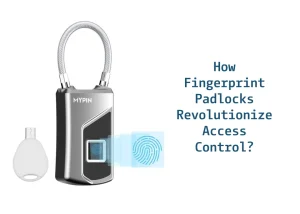Smart home systems have revolutionized the way we live, providing us with convenience, comfort, and enhanced security. One of the key components of a smart home system is a fingerprint padlock. These innovative devices have replaced traditional locks and keys, offering a more secure and convenient way to protect our homes. In this article, we will explore the role of fingerprint padlocks in smart home systems and discuss their benefits, integration with other devices, security features, factors to consider when choosing one, installation and setup, troubleshooting common issues, and future advancements.
How Fingerprint Padlocks Work in Smart Home Systems
Fingerprint padlocks utilize advanced biometric technology to provide access control to our homes. These devices are equipped with a built-in fingerprint scanner that can recognize and authenticate authorized users. When a user places their finger on the scanner, the padlock compares the unique pattern of their fingerprint against pre-registered fingerprints in its database. If a match is found, the padlock unlocks, granting access to the user.
The fingerprint scanner in these padlocks is typically equipped with high-resolution sensors that capture even the minutest details of a fingerprint. This ensures a high level of accuracy and prevents unauthorized access. Additionally, fingerprint padlocks often have backup access methods, such as PIN codes or Bluetooth connectivity, to provide alternative ways of unlocking the padlock in case the fingerprint scanner fails or malfunctions.
Advantages of Using Fingerprint Padlocks in Smart Homes
Using fingerprint padlocks in smart homes offers a multitude of advantages. Firstly, they provide a high level of security. Unlike traditional locks that can be picked or keys that can be lost or duplicated, fingerprint padlocks rely on a unique biological characteristic – the fingerprint – which is extremely difficult to replicate. This makes it nearly impossible for unauthorized individuals to gain access to your home.
Secondly, fingerprint padlocks offer convenience. With a fingerprint padlock, there’s no need to carry around keys or remember complex PIN codes. You simply place your finger on the scanner, and the padlock unlocks within seconds. This is especially useful when your hands are full or when you need to grant access to someone while you’re away from home.
Lastly, fingerprint padlocks can be easily integrated into existing smart home systems. They can communicate with other devices, such as smart doorbells or security cameras, to provide a comprehensive home security solution. For example, when the fingerprint padlock detects an authorized user, it can automatically disarm the security system and turn on the lights, creating a seamless and convenient experience.
Integration of Fingerprint Padlocks with Other Smart Home Devices
Fingerprint padlocks can be seamlessly integrated with other smart home devices to enhance the overall security and functionality of your home. These devices can communicate with each other through a central hub or a smart home automation platform. Here are some examples of how fingerprint padlocks can work in synergy with other smart home devices:
- Smart Doorbells: When someone rings your smart doorbell, the fingerprint padlock can be configured to automatically unlock the door if the visitor’s fingerprint is recognized. This eliminates the need to physically go to the door and manually unlock it.
- Security Cameras: Fingerprint padlocks can communicate with security cameras to provide visual verification of authorized users. When an authorized fingerprint is detected, the security camera can capture a snapshot or start recording, allowing you to monitor who is entering your home.
- Smart Lights: By integrating with smart lights, fingerprint padlocks can automatically turn on or adjust the lights when an authorized user enters the home. This not only provides convenience but also enhances security by creating the illusion of an occupied home when you’re away.
By integrating fingerprint padlocks with other smart home devices, you can create a comprehensive and interconnected home security system that offers convenience, peace of mind, and enhanced protection.
Security Features and Benefits of Fingerprint Padlocks
Fingerprint padlocks offer a wide range of security features and benefits that make them an ideal choice for smart homes. Here are some key features to consider:
- Biometric Authentication: Fingerprint padlocks use biometric authentication, which is considered one of the most secure methods of access control. Unlike passwords or PIN codes, fingerprints cannot be easily guessed or stolen.
- Multi-Factor Authentication: Many fingerprint padlocks offer multi-factor authentication. Combining fingerprint recognition with other access methods such as PIN codes or Bluetooth connectivity. This provides an extra layer of security and flexibility.
- Tamper Detection: Advanced fingerprint padlocks are equipped with tamper detection mechanisms that can detect and alert you to any attempts to tamper with or force open the lock. This adds an additional level of protection against break-ins.
- Remote Access Control: Some fingerprint padlocks can be remotely controlled via a smartphone app. Allowing you to grant or revoke access to your home from anywhere in the world. This is especially useful when you need to provide temporary access to guests or service providers.
- Activity Logs: Many fingerprint padlocks keep detailed activity logs, recording each entry and exit. This allows you to monitor who has accessed your home and at what time, providing you with valuable information in case of any security incidents.
In conclusion, fingerprint padlocks offer a high level of security, convenience, and integration capabilities, making them an essential component of any smart home system. By considering the security features and benefits of fingerprint padlocks, you can enhance the overall security of your home and enjoy the peace of mind that comes with knowing your home is protected.
Factors to Consider When Choosing a Fingerprint Padlock for Your Smart Home
Choosing the right fingerprint padlock for your smart home is crucial to ensure optimal security and functionality. Here are some factors to consider before making a purchase:
- Reliability and Accuracy: Look for a fingerprint padlock that has a high level of reliability and accuracy in fingerprint recognition. Read customer reviews and check for any reported issues with false positives or false negatives.
- Compatibility: Ensure that the fingerprint padlock is compatible with your existing smart home system or the devices you plan on integrating it with. Check for compatibility with the communication protocol used by your smart home hub or automation platform.
- Battery Life: Consider the battery life of the fingerprint padlock. Look for devices with long battery life or those that offer low-battery notifications to avoid unexpected lockouts.
- Durability and Weather Resistance: If the fingerprint padlock will be used on an exterior door, ensure that it is durable and weather-resistant. Look for devices with high IP ratings that can withstand various weather conditions.
- Backup Access Methods: Consider whether the fingerprint padlock offers backup access methods, such as PIN codes or Bluetooth connectivity. These can be useful in case the fingerprint scanner malfunctions or if you need to grant access to someone who doesn’t have a registered fingerprint.
Taking these factors into account will help you choose a fingerprint padlock that meets your specific needs and ensures the security and functionality of your smart home system.
Installation and Setup of Fingerprint Padlocks in Smart Home Systems
Installing and setting up a fingerprint padlock in your smart home system is a relatively straightforward process. Here are the general steps involved:
- Choose the Right Location: Select a suitable location for the fingerprint padlock. Consider factors such as accessibility, visibility, and protection from the elements.
- Prepare the Door: Ensure that the door is properly aligned, and the lock mechanism is in good condition. Make any necessary repairs or adjustments before installing the fingerprint padlock.
- Follow the Manufacturer’s Instructions: Carefully read and follow the manufacturer’s instructions for installing and setting up the fingerprint padlock. These instructions may vary depending on the specific model and brand you choose.
- Register Authorized Fingerprints: Use the provided software or app to register the fingerprints of authorized users. Follow the instructions to capture and store the fingerprints securely in the padlock’s database.
- Test the Lock: After installation and fingerprint registration, test the lock to ensure that it is functioning correctly. Verify that authorized fingerprints are recognized and that the lock unlocks as expected.
By following these steps and referring to the manufacturer’s instructions, you can easily install and set up a fingerprint padlock in your smart home system, enhancing the security and convenience of your home.
Troubleshooting Common Issues with Fingerprint Padlocks in Smart Homes
While fingerprint padlocks are reliable and secure, occasional issues may arise. Here are some common issues and their possible solutions:
- Fingerprint Recognition Failure: If the fingerprint padlock consistently fails to recognize authorized fingerprints, ensure that the scanner is clean and free of any dirt or smudges. If the issue persists, try re-registering the fingerprints or seek technical support from the manufacturer.
- Battery Drain: If the battery life of the fingerprint padlock is significantly shorter than expected, check for any power-consuming features or malfunctions. Adjust the settings, replace the batteries, or contact the manufacturer for assistance.
- False Positives or Negatives: In some cases, a fingerprint padlock may falsely recognize an unauthorized fingerprint as authorized or fail to recognize an authorized fingerprint. If this occurs, try re-registering the fingerprints, ensuring they are captured accurately.
- Software or Firmware Issues: If you experience software or firmware issues, such as connectivity problems or system crashes, ensure that you have the latest updates installed. Resetting the padlock to factory settings or contacting the manufacturer’s technical support may also resolve the issue.
If you encounter any issues with your fingerprint padlock, refer to the manufacturer’s troubleshooting guide, user manual, or contact their technical support for assistance. Promptly addressing and resolving issues will ensure the optimal performance and security of your smart home system.
Future Trends and Advancements in Fingerprint Padlocks
As technology continues to advance, we can expect exciting developments in the field of fingerprint padlocks for smart homes. Here are some future trends and advancements to look out for:
- Improved Accuracy and Reliability: Manufacturers will continue to enhance the accuracy and reliability of fingerprint recognition technology, reducing false positives and negatives.
- Enhanced Integration Capabilities: Fingerprint padlocks will become even more seamlessly integrated with other smart home devices, allowing for more sophisticated automation and control.
- Advanced Security Features: Future fingerprint padlocks may incorporate additional security features, such as facial recognition or voice recognition, to further enhance home security.
- Cloud Connectivity: Fingerprint padlocks may utilize cloud connectivity to provide remote access control, real-time monitoring, and seamless integration with other cloud-based smart home devices.
- Smartphone Integration: Integration with smartphones will become more prevalent, allowing users to control and monitor their fingerprint padlocks through dedicated apps.
As these advancements become a reality, fingerprint padlocks will continue to play a significant role in enhancing the security and functionality of smart homes.
Conclusion:
Fingerprint padlocks have transformed the way we secure our homes in smart home systems. With their advanced biometric technology, these devices offer a high level of security, convenience, and integration capabilities. By choosing the right fingerprint padlock, considering factors such as reliability, compatibility, battery life, and security features, you can enhance the overall security of your smart home.
Through integration with other smart home devices, such as smart doorbells, security cameras, and smart lights, fingerprint padlocks provide a comprehensive home security solution. They offer multi-factor authentication, tamper detection, and remote access control, ensuring the utmost protection for your home.
With easy installation and setup, troubleshooting guidelines, and future advancements on the horizon, fingerprint padlocks are becoming an essential component of any smart home system. By embracing this technology, you can enjoy the convenience, peace of mind, and enhanced security that fingerprint padlocks bring to your smart home.




